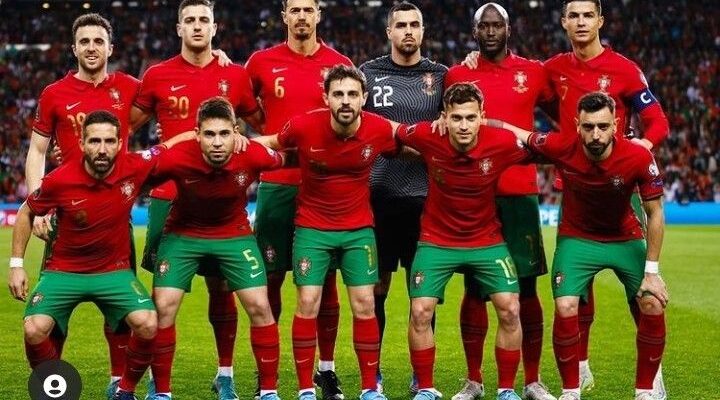In the intricate ecosystem of global football, few leagues operate with the precision and financial acumen of Portugal`s Primeira Liga. It’s a captivating narrative: a league that consistently punches above its weight, not just on the pitch, but crucially, in the high-stakes world of player transfers. The 2025/26 season proved to be a particularly remarkable chapter, solidifying Portugal`s reputation as a veritable goldmine for emerging talent and a strategic hub for European giants seeking their next superstar.
A League of Strategic Sales: The 2025/26 Overview
While the spotlight often falls on the astronomical spending sprees of Europe`s wealthiest clubs, the Primeira Liga thrives on a different, yet equally vital, financial model: intelligent player development and opportune sales. The 2025/26 transfer window was nothing short of a masterclass in this strategy.
Across the 18 clubs of Portugal`s top flight, an astonishing 294 players departed their respective squads. This mass exodus wasn`t a sign of distress, but rather a testament to the irresistible allure of their nurtured talent. These transactions collectively generated a staggering revenue of nearly €353 million. To put that into perspective, it`s enough to fund a small nation`s annual budget, or perhaps, a few very ambitious stadium renovations. For a league of Portugal`s economic scale, these figures underscore its indispensable role in the wider European football economy.
The Big Three: Architects of Revenue
Unsurprisingly, the traditional powerhouses – Sporting CP, SL Benfica, and FC Porto – were the primary beneficiaries of this transfer bonanza. Their long-established academies and shrewd scouting networks continue to yield players coveted by clubs across the continent. While every club contributed to the overall player movement, the financial heavy lifting was, as usual, done by this trio.
Sporting CP: The Green and White Gold Standard
Sporting CP, renowned for its illustrious academy that produced global icons, once again topped the charts in terms of transfer revenue. The Lions raked in an impressive €128.57 million from player sales. This figure is a clear indicator of their ongoing success in identifying raw talent and honing it into highly sought-after assets.
SL Benfica: The Eagles` Economic Soar
Not far behind, SL Benfica secured €97 million in transfer fees. Benfica`s strategy of nurturing South American and home-grown talent before selling them for significant profits is a well-oiled machine, consistently delivering robust financial returns that fuel their continued domestic and international ambitions.
FC Porto: The Dragons` Dominance in Deals
FC Porto, a perennial competitor both domestically and in Europe, added €77.7 million to their coffers. The Dragons have a storied history of unearthing gems, particularly from Latin America, and transforming them into world-class players before commanding substantial fees for their departures.
Star Departures: The Faces Behind the Figures
The headline-grabbing transfers of the 2025/26 season perfectly illustrate the quality of players Portugal is consistently exporting. These aren`t just minor squad players; they are often key performers moving to the elite echelons of European football.
Here are some of the most prominent sales:
- Viktor Gyokeres (Sporting CP) to Arsenal: €65.8 million
- Álvaro Carreras (Sporting CP) to Real Madrid: €50 million
- Francisco Conceição (FC Porto) to Juventus: €32 million
- Orkun Kokçu (Benfica) to Besiktas: €25 million
- Conrad Harder (Benfica) to undisclosed club: €24 million
- Florentino (Benfica) to Burnley: €24 million
- Kerem Akturkoglu (FC Porto) to undisclosed club: €22.5 million
- Dário Essugo (Sporting CP) to undisclosed club: €22.27 million
- Otávio (FC Porto) to undisclosed club: €17 million
- João Mário (Benfica) to Juventus: €15 million
- Arthur Cabral (Benfica) to Botafogo: €12 million
- Marcus Edwards (Sporting CP) to Burnley: €10 million
- Gonçalo Borges (FC Porto) to Feyenoord Rotterdam: €10 million
- Casper Tengstedt (Benfica) to Feyenoord Rotterdam: €6 million
These transfers showcase a clear pattern: Portuguese clubs act as crucial stepping stones. Players arrive, develop rapidly under high-quality coaching and competitive pressure, and then depart for leagues offering greater financial rewards and, often, a higher profile. It`s a pragmatic necessity that has evolved into a highly effective business model.
The Unspoken Cost and Unmistakable Benefit
This constant churn of talent, while financially beneficial, does present a unique challenge for the Primeira Liga clubs themselves. How do you build a cohesive, long-term squad when your best players are consistently poached? The answer lies in the relentless pursuit of the “next big thing” – a cycle of scouting, development, and integration that is both arduous and endlessly fascinating.
The irony is not lost on observers: Portuguese clubs consistently field exciting, competitive teams, often challenging for European honors, despite effectively operating as high-level football academies for richer leagues. They embrace this role, understanding that these sales are not just profit-generating events, but vital revenue streams that allow them to sustain their operations, invest in infrastructure, and continue their search for future stars.
The 2025/26 season was a resounding affirmation of the Primeira Liga`s unique position in world football. It demonstrated that while money talks loudest in the modern game, smart management, exceptional talent identification, and a robust development pipeline can turn a smaller league into an indispensable component of the sport`s global economy. Portugal remains, without a doubt, one of football`s most fertile grounds, where the harvest is consistently rich, even if the fruits often ripen elsewhere.









